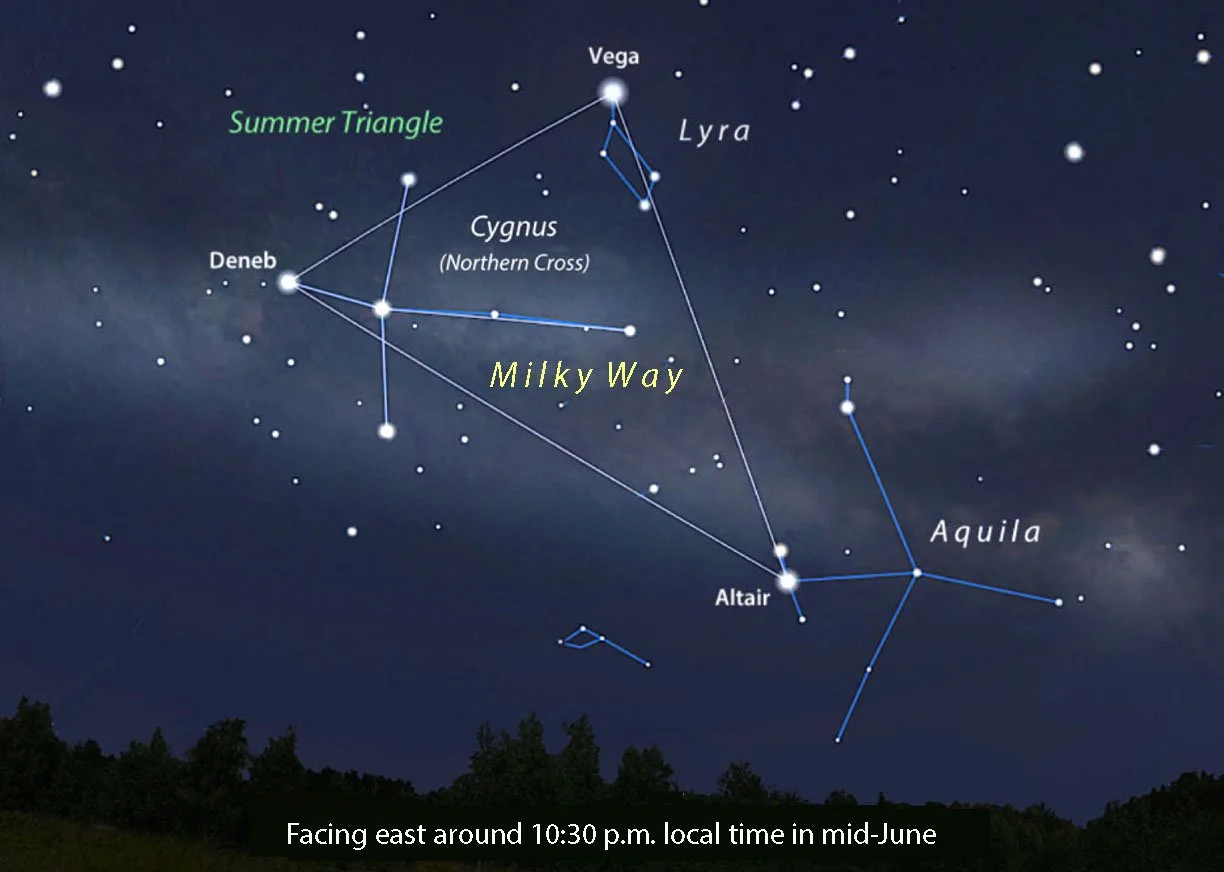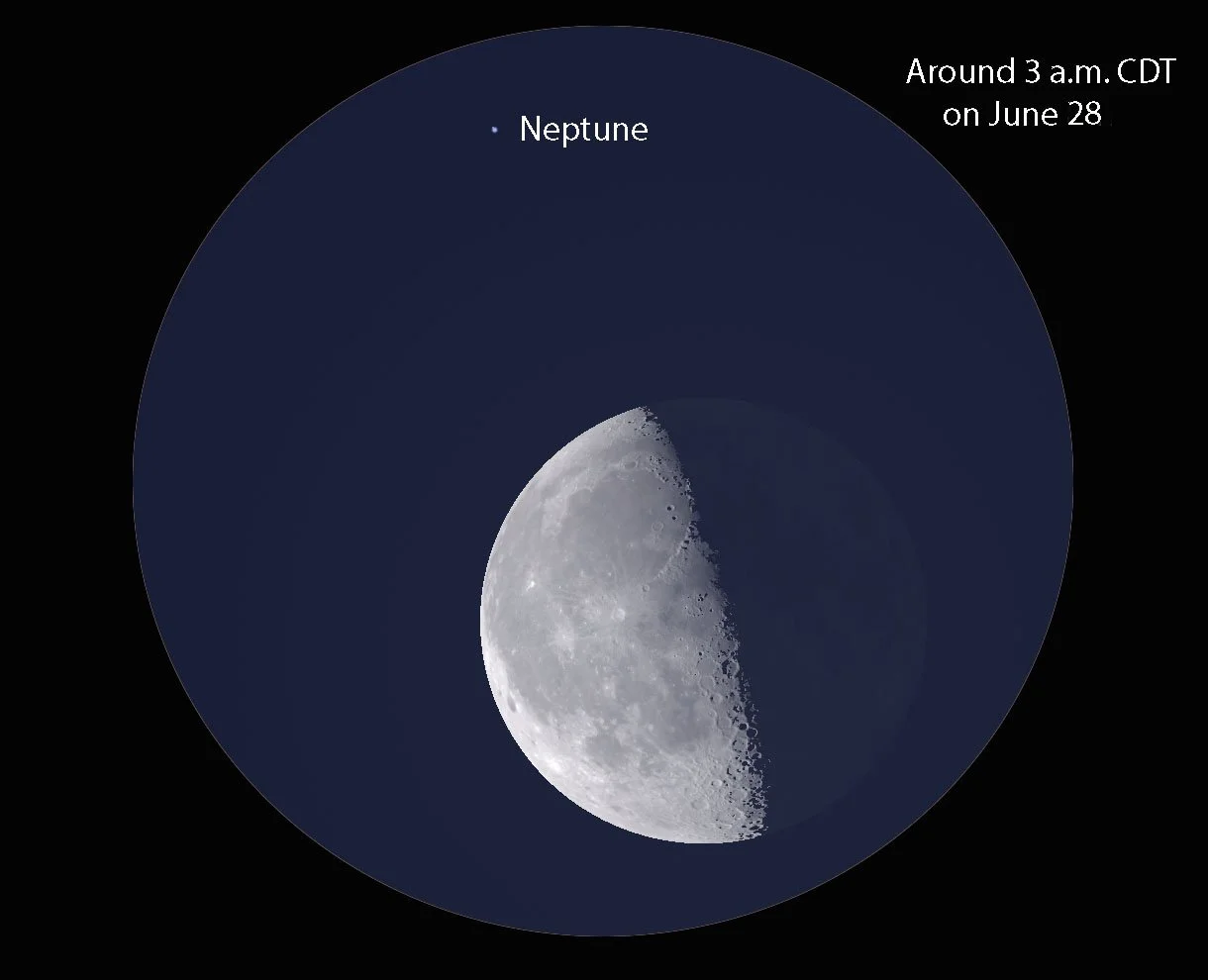Jupiter returns to the fold! For about the first two weeks of June it still cowers in the glare of dawn. But the giant planet’s visibility greatly improves during the last 10 days of the month. Watch for it to rise in Taurus the Bull low in the northeastern sky about an hour before sunrise. It quickly climbs higher and will be much easier to spot in July.
Otherwise, Mars and Saturn provide the morning planetary entertainment. Neither is especially bright but both are readily visible in the east-southeast sky before the start of dawn. Saturn creeps slowly across Aquarius the Water-carrier, while Mars moves from Pisces into Aries.
The puffy band of the Milky Way climbs into the eastern sky around 10:30-11 p.m. local time. That may sound late but from many locations it doesn’t get dark out until then. In June we experience the latest sunsets and longest twilights of the year. The Milky Way is comprised of billions of stars most of which are too far away and faint to see individually — they blend to form a glowing haze. Try scanning the band with binoculars and you’ll see a ton more stars.
Rising along with the Milky Way are the three bright stars of the Summer Triangle asterism. Vega is brightest and highest with Deneb below and to the left of Vega and Altair below and to the right. Country skies and moonless nights are ideal for viewing the Milky Way. Try for a view during the “dark window” from June 1-12 before the moon gets too bright.
Download the free Stellarium Mobile app for Android and iPhone to help you find and identify the planets and constellations. Do a Google search then install the app, set it in night mode (red screen) and point your phone skyward. For a free June sky map and calendar go to skymaps.com/skymaps/tesmn2406.pdf
Blue clouds at night
Late June through early July is also the best time to look for noctilucent or “night-shining” clouds. They appear as wispy, blue-tinted streaks and ripples across the bottom of the northern sky and make their first appearance about 45 minutes to an hour after sunset or before sunrise. Composed of meteor dust, noctilucent clouds hover about 50 miles high and catch sunlight long after lower clouds go dark. Dark skies aren’t necessary to view them, just a wide-open view to the north. Dusks and dawns right around June 21 are the very best times.
Events (a.m. indicates the event happens in the early morning sky):
June 6 – New moon
June 11 – Waxing lunar crescent shines just a few degrees to the upper right of Regulus, brightest star in Leo the Lion.
June 13 – First quarter moon. Stands nearly due south at sunset and sets around 1 a.m. local time.
June 19 – Waxing gibbous moon shines several degrees to the right (west) of Antares, brightest star in Scorpius the Scorpion.
June 20 – Summer solstice! First day of summer begins at 3:50 p.m. CDT. Shortest nights and longest days of the year.
June 21 – Full Strawberry Moon, named for the profusion of the red fruit that ripens this time of year. To watch the moon rise, check your local rising time at timeanddate.com/moon
June 27 (a.m.) – Waning gibbous moon to the right of Saturn between about 2 a.m. and dawn. Even a small telescope will clearly show the rings. Their tilt is slight this season — next March we’ll see them edgewise.
June 28 (a.m.) – Last quarter moon. Rises around 1 a.m. and stands approximately due south at sunrise. The moon passes less than its own diameter due south of Neptune this morning. You’ll need a telescope to see it. The planet will be the only star-like object at that position. Focus on the moon and move your telescope upward (north) two-thirds of a moon-diameter to spot it.
June 29 (a.m.) – Planetary parade! The moon joins Saturn, Mars and Jupiter in a striking line across the southern and eastern sky at dawn.
Bob King is an amateur astronomer, author, and passionate educator. He served as a photographer and photo editor at the Duluth News Tribune for 39 years and taught at the UMD planetarium. Bob’s work had a great impact on Voyageurs National Park. To achieve International Dark Sky Park certification, the park was required to host dark sky education events. Through the Night Sky Explorer webinars, the Conservancy was able to fulfill this component and help secure the certification for Voyageurs National Park. We can’t thank Bob King enough for sharing his talents and knowledge with the Conservancy community to support dark sky preservation.










